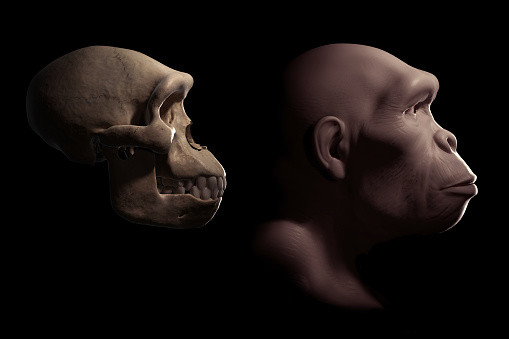First evidence of right-handedness? Fossil suggest Homo habilis used right hand to eat
Teeth found in Tanzania show that Homo habilis was right-handed like most modern humans.

Scientists have uncovered the first evidence of right-handedness in the human lineage, in a 1.8-million-year-old fossil. The discovery suggests that Homo habilis preferred using its right hand over its left – just like 90% of us.
Unlike humans, the ratio between left-handed and right-handed in apes is closer to 50-50. Many studies have investigated whether the more common use of the right hand as the dominant hand is something that occurred early in the modern human lineage and whether that differentiated us from other primates. In the new research, scientists show that brain lateralisation of Homo habilis – how some of its cognitive processes were more dominant in one brain hemisphere than the other –was similar to that of modern humans.
"We think that [the fossil] tells us something further about lateralisation of the brain," said David Frayer, the lead author of the study. "We already know that Homo habilis had brain lateralisation and was more like us than like apes. This extends it to handedness, which is key."
Labial striations
In this study published in the Journal of Human evolution, scientists have examined the fossilised teeth of Homo habilis. They actually found evidence of right-handedness by analysing small cut marks – known as labial striations – which appeared on the lip side of the anterior teeth in an intact upper jaw fossil. This fossil was found in a stream channel of the Olduvai Gorge in Tanzania and is called OH-65.
These striations can be seen with the naked eye but using a microscope, the scientists were able to learn more. They determined the angulation of the marks and they found that they veered from left down to the right. This suggests that this Homo habilis used a tool with his right hand to cut food which he held in his mouth.

"Experimental work has shown these scratches were most likely produced when a stone tool was used to process material gripped between the anterior teeth and the tool occasionally struck the labial face leaving a permanent mark on the tooth's surface," Frayer explained.
While all of this indicates that this Homo habilis specimen was right-handed, research on more fossils will be necessary to generalise the findings to all Homo habilis.
"One specimen does not make an incontrovertible case, but as more research is done and more discoveries are made, we predict that right-handedness, cortical reorganisation and language capacity will be shown to be important components in the origin of our genus", Frayer concluded.
© Copyright IBTimes 2025. All rights reserved.





















